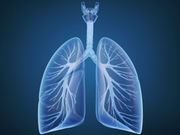Four models were well-calibrated and had higher AUCs than five that overestimated risk
MONDAY, May 14, 2018 (HealthDay News) — Four lung cancer risk models perform best in selecting ever-smokers for screening, according to a study published online May 15 in the Annals of Internal Medicine.
Hormuzd A. Katki, Ph.D., from the National Cancer Institute in Bethesda, Md., and colleagues compared U.S. screening populations selected by nine lung cancer models and examined the predictive performance in two cohorts. Model performance was assessed using data from 337,388 and 72,338 ever-smokers from the National Institutes of Health-AARP Diet and Health Study and the Cancer Prevention Study II Nutrition Survey Cohort, respectively.
The researchers found that the models chose U.S. screening populations ranging from 7.6 to 26 million ever-smokers. In both validation cohorts, four models (the Bach model; the Prostate, Lung, Colorectal, and Ovarian Cancer Screening Trial Model 2012; the Lung Cancer Risk Assessment Tool; and the Lung Cancer Death Risk Assessment Tool) were well-calibrated (expected-observed ratio range, 0.92 to 1.12) and had higher areas under the curve (AUCs, 0.75 to 0.79) than five models that tended to overestimate risk (expected-observed ratio range, 0.83 to 3.69) and had lower AUCs (0.62 to 075). At a fixed specificity, the four best performing models had the highest sensitivity, and vice versa. Better agreement on size of the screening population was seen with these models (7.6 to 10.9 million).
“The models should be further refined to improve their performance in certain subpopulations,” the authors write.
One author disclosed financial ties to Medial EarlySign and GRAIL.
Copyright © 2018 HealthDay. All rights reserved.








